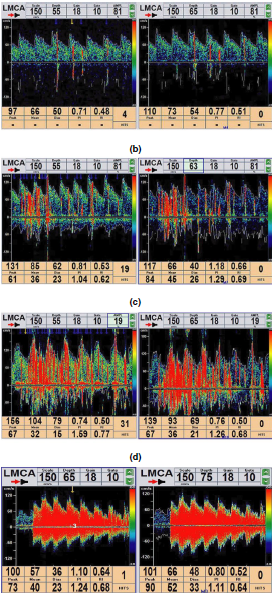摘自:Brain and Behavior 8 January 2020
作者:Yanyan Ling | Min Wang | Xudong Pan | Hongqin Zhao
Abstract
Objective:Several investigations have documented an association between migraine and right-to-left shunt (RLS). However, whether there are specific clinical features that can distinguish between migraine patients with and without RLS is unclear. This study aims to explore whether there are specific clinical features that can distinguish between migraine patients with and without RLS, and to investigate the relationship between the degree of shunt and clinical parameters of headache.
Methods: In this study, we enrolled consecutive migraineurs who underwent a structured,standardized questionnaire for family and personal history and for detailed migraine features. RLS was diagnosed based on a contrast enhancement transcranial Doppler (c-TCD) examination.
Results: Overall, 113 migraine with aura (MA) and 192 migraine without aura (MO) patients were included. Patients with MA and RLS (MARLS+) had a higher frequency for sensory aura symptoms than those with MA without RLS (MARLS−) (27.4% vs.10.0%, p = .03). Patients with MO and RLS (MORLS+) presented with significantly
younger initial age of migraine onset and experienced more severe pain intensity than those with MO without RLS (MORLS−) (mean ± SD, 25.6 ± 8.9 vs. 29.8 ± 12.7 years,p = .008 and 5.9 ± 1.4 vs. 5.3 ± 1.3, p = .006, respectively). There was no relationship between the degree of shunt and the clinical parameters of headache.
Conclusions: Our results indicate that MO patients presented with a younger initial age of migraine onset and that sensory aura symptoms in MA patients may predict the presence of RLS. However, we did not find support for relationship between the degree of shunt and clinical parameters of headache.
K E YWORDS
migraine, right-to-left shunt, transcranial Doppler

![]() 赵洪琴-Clinical features of right-to-left shunt in the different.pdf
赵洪琴-Clinical features of right-to-left shunt in the different.pdf


